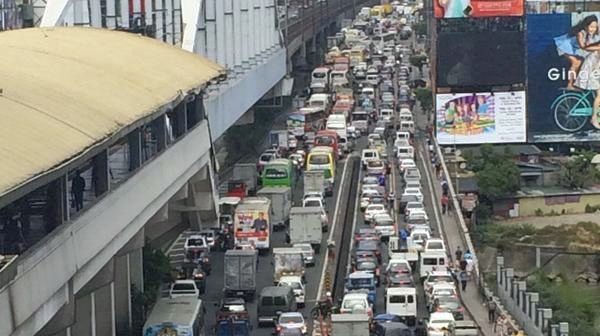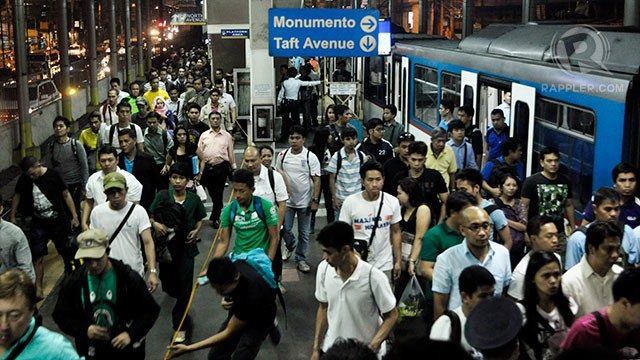SUMMARY
This is AI generated summarization, which may have errors. For context, always refer to the full article.

MANILA, Philippines – To solve Metro Manila’s traffic crisis – dubbed the worst on earth by navigation app Waze – the government is focusing its efforts on improving the public transportation system and changing citizens’ driving habits.
Though the government has been hard at work to improve public transport around Manila, people need to start following traffic rules and regulations for any significant improvement to occur, Transportation Undersecretary Annelie Lontoc said in an interview on Monday, July 18.
For starters, a more streamlined enforcement system is being tested on EDSA, Lontoc said. The government has divided the busy thoroughfare into 10 traffic zones, each with its own dedicated personnel from the Metro Manila Development Authority (MMDA) and the Highway Patrol Group (HPG) to enforce traffic rules.
Each of these zones will also have access to tow trucks, a quick response team on motorcycles, and personnel from the Land Transportation Office (LTO) and Land Transportation Franchising and Regulatory Board (LTFRB) to help with illegally parked cars and “colorum” (out-of-line) vehicles.
Despite all the government’s efforts, however, Lontoc insisted that peoples’ driving habits need to change before the traffic situation can improve. According to Lontoc, since the MMDA re-implemented the No Contact Apprehension Policy in April, more than 25,000 vehicles have been apprehended.
“We really need discipline,” said Lontoc when asked about driving habits. “We can’t just rely on enforcement. Car users need to follow the rules themselves. The roads are already so congested that anything that can stop traffic – like stalled vehicles – will cause it to accumulate.”
Overall, however, Lontoc believes that the traffic crisis can be resolved. “If we maintain our lane, if we are defensive drivers, we can avoid it,” she said, referring to congestion in the streets.
“As long as the road is moving, the cooperation of everyone to make the traffic flow is really a big deal,” she added.
Improvements coming to public transportation

In relation to Presidential Spokesperson Ernesto Abella’s statement that traffic in Metro Manila would improve within the next 100 days, Lontoc also said that, “Within 100 days, we will restore the MRT and LRT to 2010 level, where there are 20 trains running.”
Regarding long-term plans for the train systems, Lontoc stated that the main goal was to increase the passenger capacity of these trains. Today, the train lines are only able to serve 350,000 passengers each day—a mere 3% of the over 12 million commutes made throughout Metro Manila daily.
Over the next 3 years, Department of Transportation will work to procure more coaches, build extensions for LRT 1, LRT 2, and MRT 7, and invest heavily on infrastructure so as to serve a larger number of commuters across a wider range of areas.
The Department is also in the process of deploying of cheap, safe, and well-maintained point-to-point buses, said Lontoc. The government hopes that by making these buses more comfortable and convenient – taking commuters from one location to another without any stops in between – more people will opt for public transport, reducing the number of cars on the road.
Currently 25% of the people who take these buses have already made the shift from taking private vehicles, but the government intends to get that figure up to 50%.
“I’ve tried it myself and it’s very convenient,” said Lontoc when asked about her experience on one of the new buses. “It’s so much cheaper than bringing a car, and they even have free wifi, so I could check email on the way to work.”
Though these buses only cover 5 routes now (Alabang-Makati, Robinsons-Makati, Trinoma-Makati, SM Megamall-SM North & SM North-Makati), the government plans on rolling out additional vehicles along more routes in August.
According to Undersecretary Lontoc, the government will also work on modernizing public utility vehicles like the jeepney. Through government financing, jeepneys around Metro Manila will get their engines replaced with newer models that run on more eco-friendly fuels. – Paco Tantoco / Rappler.com
Paco Tantoco is a Rappler intern.
Add a comment
How does this make you feel?
There are no comments yet. Add your comment to start the conversation.